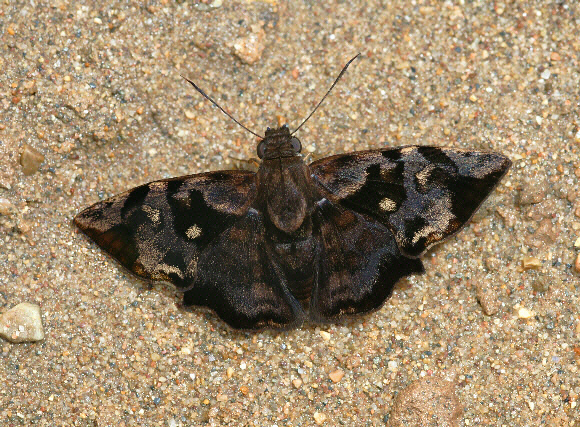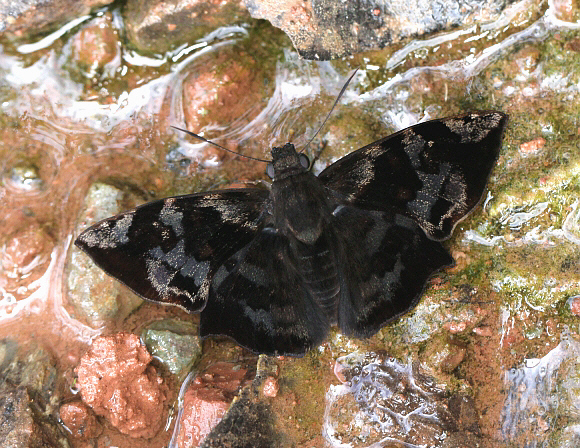
Introduction
The Pyrginae, popularly known as Flats or Spreadwings, are a cosmopolitan subfamily distributed across temperate and tropical habitats throughout the world. In the Americas there are 990 species, of which about 580 are assigned to the tribe Pyrgini.
The genus Antigonus comprises 9 medium sized butterflies, characterised by having pointed forewings, and slight concavities in the outer margins of fore and hindwings. These butterflies have a habit ( shared with several other Pyrgine genera ) of holding the forewings such that the apical area is bent downwards at an angle of about 30 degrees.
Antigonus nearchus occurs in lowland forests from Mexico to Brazil and Peru.

Habitats
This species is confined to lowland /mid elevation rainforests at altitudes below about 1000m.
Lifecycle
The lifecycle appears to be unrecorded. Generally, Pyrgine butterflies lay their eggs singly on either the upperside or underside of leaves. The larvae are typically dull green or brownish, with thin longitudinal lines along the back and sides, and with black shiny heads. They feed typically on low growing herbaceous plants, but a small percentage feed on the leaves of bushes or trees. The pupae are usually dark and smooth, with the wing cases in a contrasting tone or colour. They are normally formed within silken tents formed by spinning together the leaves of the foodplant.
Adult behaviour
Like many other members of the Skipper family this is a butterfly that is dismissed by many as being a “dull brown job” worthy of little interest. However although from a distance it may seem a little dingy, when seen close up it is a creature of great beauty, whose velvety wings are adorned with a multitude of purple, cream, grey and golden hues.
This common butterfly is usually seen in small aggregations on wet sandbanks or around the edges of drying pools and lagoons, and is only active in hot sunny conditions. It is normally found in the presence of other Pyrgine Skippers in the genera Antigonus, Bolla, Anastrus, Cycloglypha and Gorgopas. These species tend to aggregate away from Nymphalids, Pierids and Papilionids that may be present on the same patch of ground.
